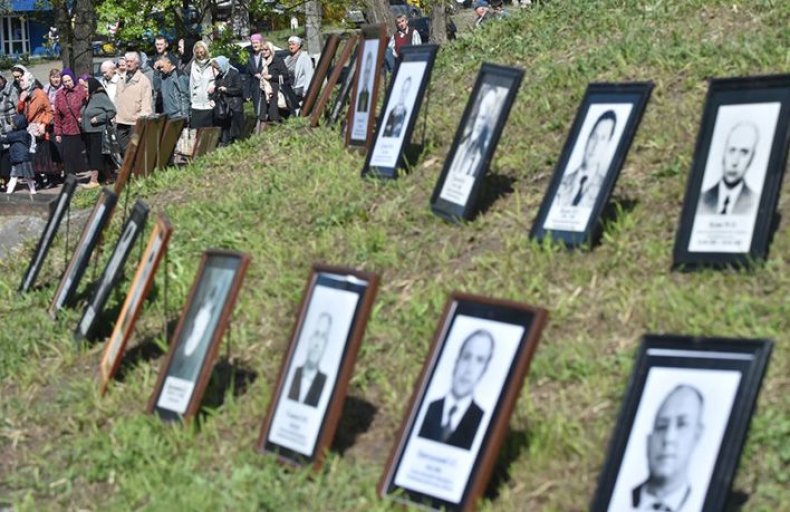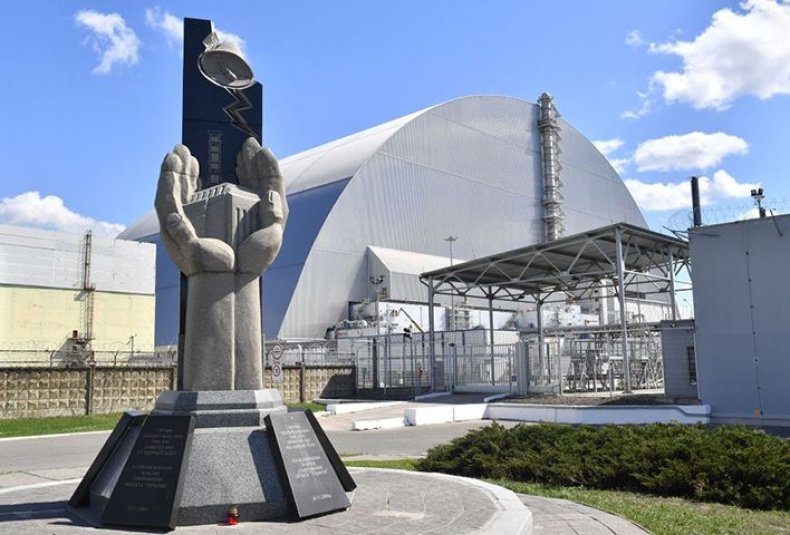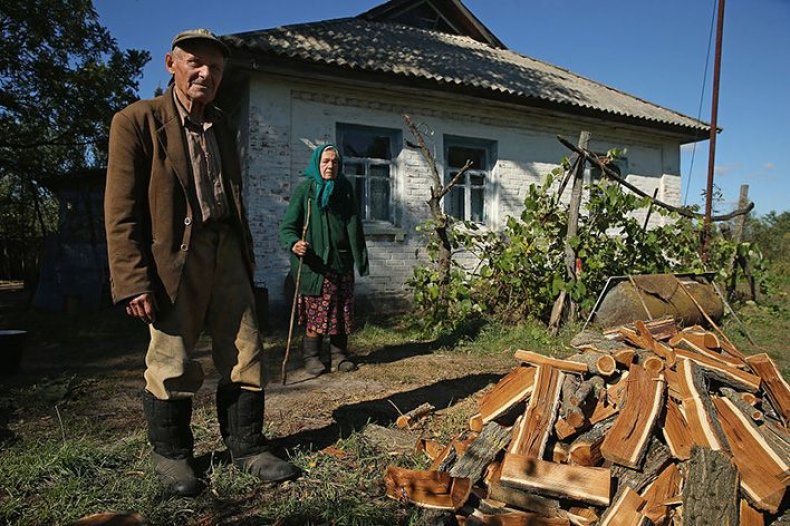How Long Until Chernobyl Is Safe Again
The 1986 Chernobyl power plant blow is frequently referred to as the earth's worst nuclear disaster. When one of the four reactors at the Chernobyl Nuclear Power Plant exploded early on in the morning of April 26, 1986, a deject of radioactive material rained downwards on the nearby towns and villages in what are today Ukraine, Republic of belarus and Russia.
Firefighters, many of whom afterward died from radiation exposure, were dispatched to cascade water on the reactor. Nevertheless, the fire burned for ix days. All of the 50,000 people living in the nearby boondocks of Pripyat, which had been synthetic in the 1970s to house power-institute workers and their families, were immediately evacuated. An estimated 350,000 people were evacuated from the area around the plant. Eventually an expanse of effectually 1,000 square miles was designated the Exclusion Zone. Travel to the expanse was prohibited. In the years that followed, nature took over the abased area.
Now, every bit Chernobyl becomes a popular destination for people interested in farthermost tourism or the history of nuclear disaster, ane major question remains: Is Chernobyl safe?
Is Chernobyl safe?
"People say it's non that unsafe. Even almost living there, they say that the people living at that place are healthy," said Franka Hummels, a Dutch writer and journalist who spent years traveling to the exclusion zone in Belarus to conduct research for a book on Chernobyl. "The people who are not living there accept either died or moved away to somewhere with good health care, and so yep, the people who remain are salubrious; that'south how it works. But that doesn't hateful it is healthy to live in that location."
How many people died from Chernobyl?

Officially, 31 people died in the Chernobyl disaster. Just researchers estimate that thousands, possibly tens of thousands, may accept died or fallen ill from exposure to radiation after the accident. Ukraine and Belarus both have a loftier percentage of the population that suffers from thyroid cancer, one of the simply illnesses that can be traced directly back to radiation.
How long until Chernobyl will be completely safe?

Information technology depends on which part of Chernobyl you're talking well-nigh. The highly publicized number is 20,000 years, only that refers specifically to the Elephant's Human foot, the highly radioactive remains of the reactor itself. In a broader sense, information technology's harder to pin down how long it will exist until Chernobyl is completely safe. Experts estimate anywhere from twenty years to several hundred years, because the contagion levels are not consistent in the surrounding expanse.
It is also tempting to compare Chernobyl to Hiroshima, which was the site of an diminutive flop assault but is safe today. However, the radioactivity is completely unlike. A nuclear bomb is designed to release all its free energy in a massive burst, and the radiation disperses quickly. In the example of Chernobyl, radioactive elements were scattered in an explosion. That means highly radioactive pieces of the reactor, for example, are embedded in the soil and continue to leak radiation into the surrounding environment.
Tin you live in Chernobyl now?

Some elderly people from the area accept moved dorsum domicile. At to the lowest degree 100 people are estimated to be in Ukraine's Chernobyl exclusion zone today. In neighboring Belarus, the number may be higher.
"Belarus has this strange relationship with Chernobyl and the Exclusion Zone considering of the dictatorship, considering information technology'due south a propaganda dictatorship," Hummels added, describing the Belarusan authorities of Alexander Lukashenko, who is often described every bit Europe's last dictator. "So if the authorities says it's condom, your life is easier if you just become along with it. So people only choose to believe the regime that it's safe."
Meanwhile, people living in the Exclusion Zone in Belarus get access to complimentary health care and electricity, among other perks, a fact that has encouraged low-income people and other vulnerable communities to move in that location. Russian tourists take reward of the empty space and pristine nature to camp and fish, and sometimes they temporarily occupy an abased firm equally a summer residence.
Source: https://www.newsweek.com/chernobyl-safe-now-when-will-1414489
0 Response to "How Long Until Chernobyl Is Safe Again"
ارسال یک نظر